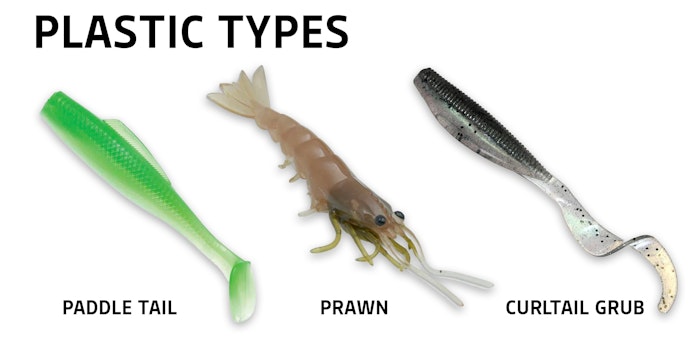Soft plastics fishing is popular and effective technique for anglers seeking versatility and success in a variety of environments. In this video, we'll delve into the valuable advice shared by seasoned angler Brett Wilson on soft plastics fishing. Brett's insights cover lure selection, retrieves, and essential tips for a successful fishing experience.
Soft Plastic Lure Styles: A Trio of Choices
Brett highlights three main styles of soft plastic lures that cater to various fishing scenarios. The minnow or paddle style, with its need for a more aggressive action, is ideal for deeper fishing and in larger sizes suits larger species like barramundi and mangrove jack. On the other hand, prawn or shrimp style patterns, though smaller, are excellent choices due to their effectiveness — after all, everything in Australia will eat a prawn. Lastly, the curly tail grub offers an all-around solution, available in both small and large versions, and excels with a finesse approach, making it suitable for a wide range of situations.

Three Essential Retrieves for Success
Soft plastics fishing involves three main retrieves:
Single Lift: Perfect for smaller plastics and curly tail grubs, the single lift involves a slow lift of the rod and a pause, allowing the lure to fall and entice fish to strike. Keeping an eye on the line's belly is crucial for detecting bites during this retrieve.
Double Hop: An aggressive retrieve, particularly effective for flathead, the double hop involves rapid movements that kick up sand and attract fish, especially flathead in the estuary. Watching the belly of the line is key, ensuring you're ready to strike when the lure is on the descent. Most stakes will occur when the lure is falling back to the bottom.
Slow Roll: This retrieve is self-explanatory—a slow, steady roll of the lure through the water column. Ideal for freshwater species, it requires a watchful eye for any subtle bites along the way. Biggest tip is not to wind too fast.
Staying in Contact
Brett stresses the need to stay in constant contact with your line. Success in soft plastics fishing is often determined by the angler's ability to detect bites. Whether you're employing a single lift, double hop, or slow roll, maintaining awareness of your line and adjusting your retrieve speed accordingly is crucial.
The Simplicity of Land-Based Soft Plastics Fishing
One of the beauties of soft plastics fishing, as highlighted by Brett, is its simplicity. Armed with a few soft plastics, the right jig heads, and a quality rod and reel combo, anglers can cover a vast expanse of territory. Land-based soft plastics fishing allows for exploration and enjoyment without the need for elaborate bait setups.
In conclusion, Brett Wilson's insights into soft plastics fishing provide a valuable guide for anglers of all levels. By understanding lure styles, matching conditions, mastering retrieves, and staying in constant contact with your line, you can enhance your soft plastics fishing experience and increase your chances of landing that prized catch.














